Green and Blue Hydrogen in the U.S.
As the world transitions towards a low-carbon economy, hydrogen has emerged as a crucial component in reducing greenhouse gas emissions. Particularly, low carbon intensity hydrogen, which includes both green and blue hydrogen, is gaining traction as a key player in decarbonizing industries, transportation, and power generation. In the United States, a combination of technological advancements and supportive legislative frameworks is accelerating the development and adoption of low-carbon hydrogen.
Understanding Low Carbon Intensity Hydrogen: Green vs. Blue Hydrogen
Low carbon intensity hydrogen refers to hydrogen produced with minimal greenhouse gas emissions. There are primarily two types:
Blue Hydrogen: Produced from natural gas through a process called steam methane reforming (SMR) or autothermal reforming (ATR), where the resulting carbon dioxide emissions are captured and stored underground through carbon capture and storage (CCS) technologies. While not entirely carbon-neutral, blue hydrogen significantly reduces carbon emissions compared to traditional hydrogen production methods.
Green Hydrogen: Produced through the electrolysis of water using renewable energy sources such as wind, solar, or hydropower. The process results in zero carbon emissions, making green hydrogen the gold standard for sustainable energy.
U.S. Legislative Support for Green and Blue Hydrogen
The United States has recognized the potential of hydrogen as a clean energy source and has introduced several legislative measures to promote the development and deployment of green and blue hydrogen.
The Infrastructure Investment and Jobs Act (IIJA)
The Infrastructure Investment and Jobs Act, signed into law in November 2021, allocates significant funding to clean energy projects, including hydrogen. Key provisions supporting hydrogen include:
- $8 Billion for Regional Clean Hydrogen Hubs: The IIJA provides funding to establish four regional clean hydrogen hubs across the U.S. These hubs will focus on the production, processing, delivery, storage, and end-use of hydrogen, fostering innovation and commercialization of hydrogen technologies. The hubs will utilize both green and blue hydrogen, with an emphasis on integrating renewable energy sources.
- $1 Billion for Electrolysis Research and Development: This funding is directed towards reducing the cost of producing green hydrogen through electrolysis. By advancing R&D in this area, the U.S. aims to make green hydrogen more competitive with other forms of hydrogen production.
- $500 Million for Clean Hydrogen Manufacturing and Recycling Initiatives: The IIJA also supports domestic manufacturing of clean hydrogen technologies and the recycling of hydrogen fuel cells, further bolstering the hydrogen economy.
The Inflation Reduction Act (IRA)
The Inflation Reduction Act, passed in 2022, includes several provisions that provide tax incentives and credits for clean energy production, including hydrogen:
- Clean Hydrogen Production Tax Credit (PTC): The IRA introduces a tax credit for hydrogen producers based on the carbon intensity of their hydrogen production. Producers of green and blue hydrogen can receive a credit of up to $3.00 per kilogram of hydrogen, depending on the lifecycle emissions of their production processes.
- Investment Tax Credit (ITC) for Hydrogen Infrastructure: The IRA extends the ITC to cover hydrogen production facilities, storage systems, and refueling infrastructure, promoting investment in the entire hydrogen value chain.
- Support for Carbon Capture and Storage (CCS): The IRA enhances tax credits for carbon capture, utilization, and storage (CCUS) technologies, which are crucial for the production of blue hydrogen. The expanded 45Q tax credit provides up to $85 per ton of CO2 captured and stored, making blue hydrogen projects more economically viable.
The Department of Energy’s (DOE) Hydrogen Program
The U.S. Department of Energy (DOE) plays a central role in advancing hydrogen technologies through its Hydrogen Program:
National Hydrogen Strategy: The DOE is developing a comprehensive national strategy for hydrogen, focusing on R&D, infrastructure development, and market creation. This strategy will align federal policies and investments to accelerate the deployment of low-carbon hydrogen across various sectors of the economy.
Hydrogen Energy Earthshot Initiative: Launched in June 2021, the DOE’s Hydrogen Energy Earthshot aims to reduce the cost of clean hydrogen to $1 per kilogram within a decade. This initiative is critical for making green hydrogen cost-competitive with other energy sources and driving widespread adoption.
The Future of Hydrogen in the U.S.
The combination of legislative support and technological innovation is positioning the United States as a global leader in the hydrogen economy. Green and blue hydrogen are expected to play a critical role in decarbonizing hard-to-abate sectors such as heavy industry, aviation, and long-haul transportation.
In the coming years, we can anticipate significant growth in hydrogen production capacity, the establishment of hydrogen hubs, and the development of robust supply chains. The U.S. government’s commitment to low-carbon hydrogen, coupled with private sector investments, will be instrumental in achieving the nation’s climate goals and transitioning to a sustainable energy future.
Conclusion
Low carbon intensity hydrogen, particularly green and blue hydrogen, is set to revolutionize the energy landscape in the United States. With strong legislative backing from acts like the IIJA and IRA, as well as initiatives from the Department of Energy, the U.S. is on track to becoming a leader in hydrogen production and utilization.
As the nation moves forward with its hydrogen agenda, continued innovation, investment, and collaboration between public and private sectors will be key to realizing the full potential of this clean energy source. The journey towards a low-carbon economy is complex, but with hydrogen at the forefront, a sustainable energy future is within reach.
References
U.S. Department of Energy (DOE). Hydrogen Program. DOE Hydrogen Program
U.S. Department of Energy (DOE). Hydrogen Energy Earthshot Initiative. DOE Earthshot Initiative
U.S. Congress. Infrastructure Investment and Jobs Act (IIJA). Full Text of the IIJA
U.S. Congress. Inflation Reduction Act (IRA). Full Text of the IRA
U.S. Department of the Treasury. Section 45Q Tax Credit. 45Q Tax Credit for Carbon Capture

